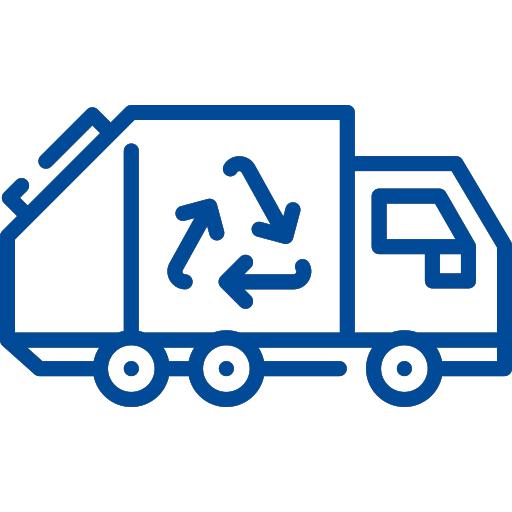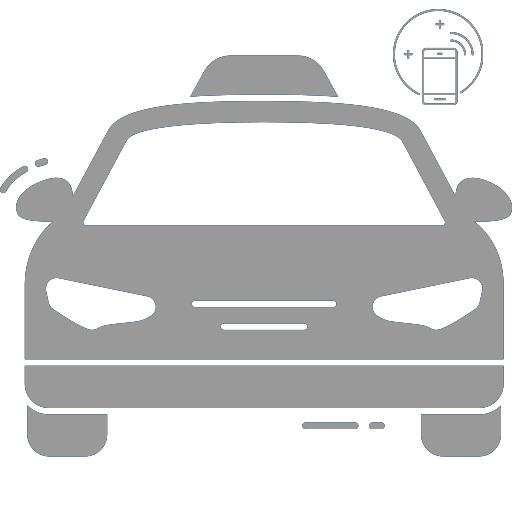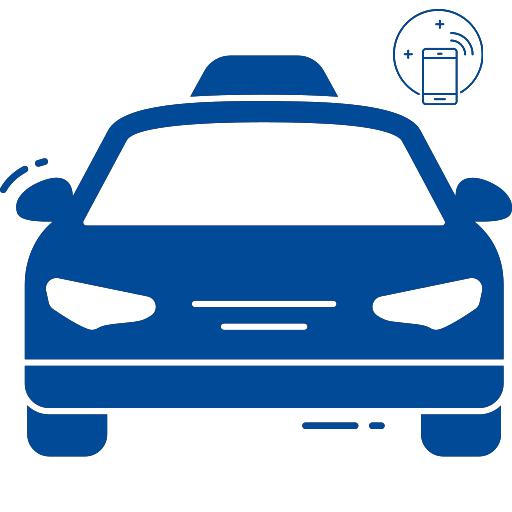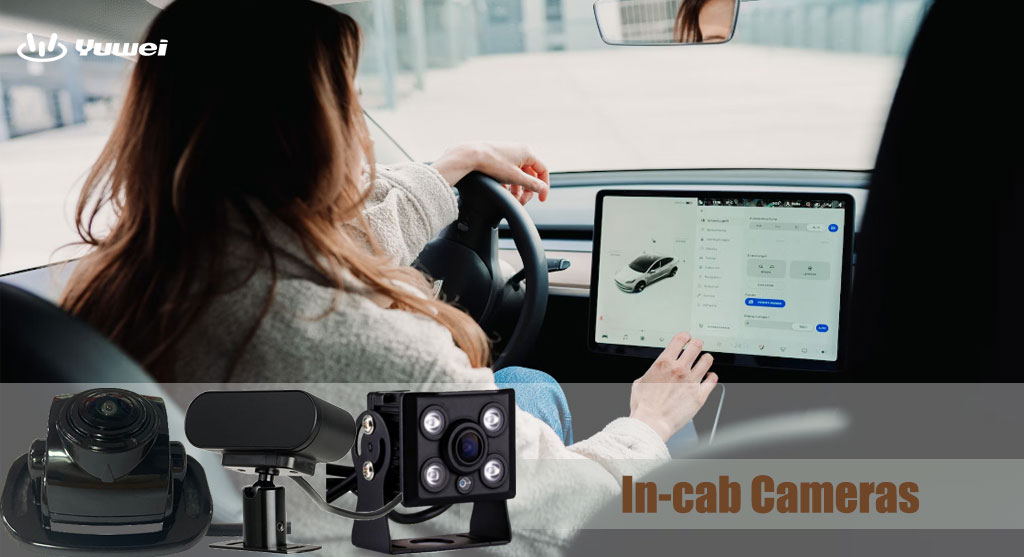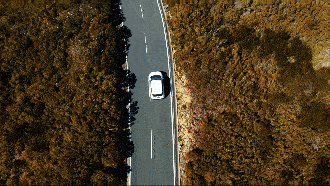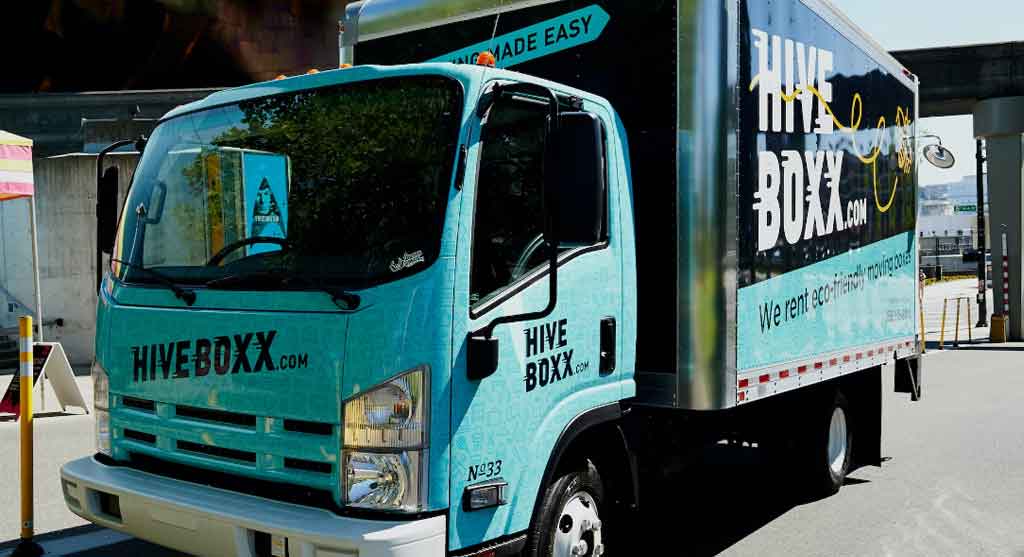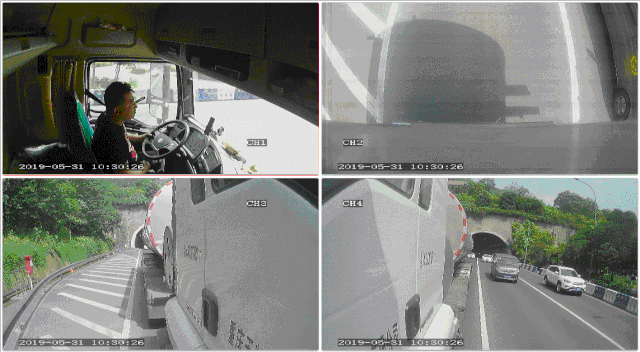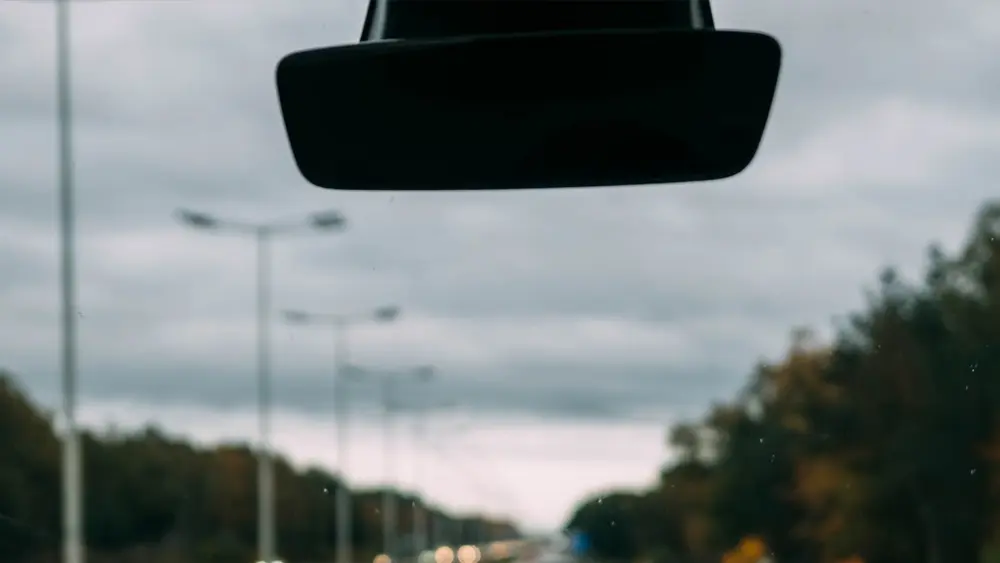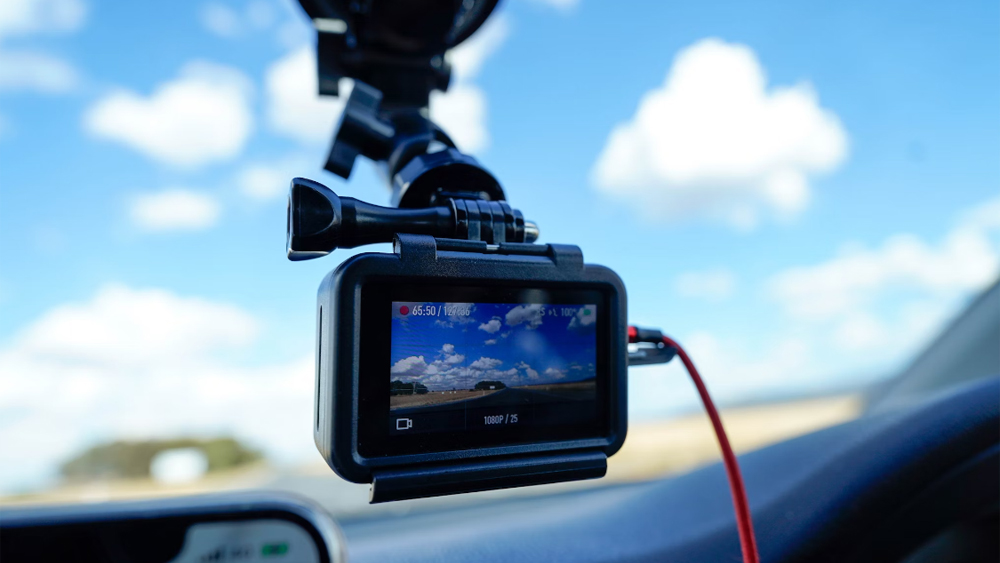The Best Truck Camera Systems Solution
Preface:
Blind spot camera monitoring and alarm reminders have become standard configurations for truck fleets, especially for heavy-duty trucks. Due to the high number of accidents involving trucks each year, most countries have enacted corresponding regulations requiring blind spot monitoring for heavy-duty trucks.
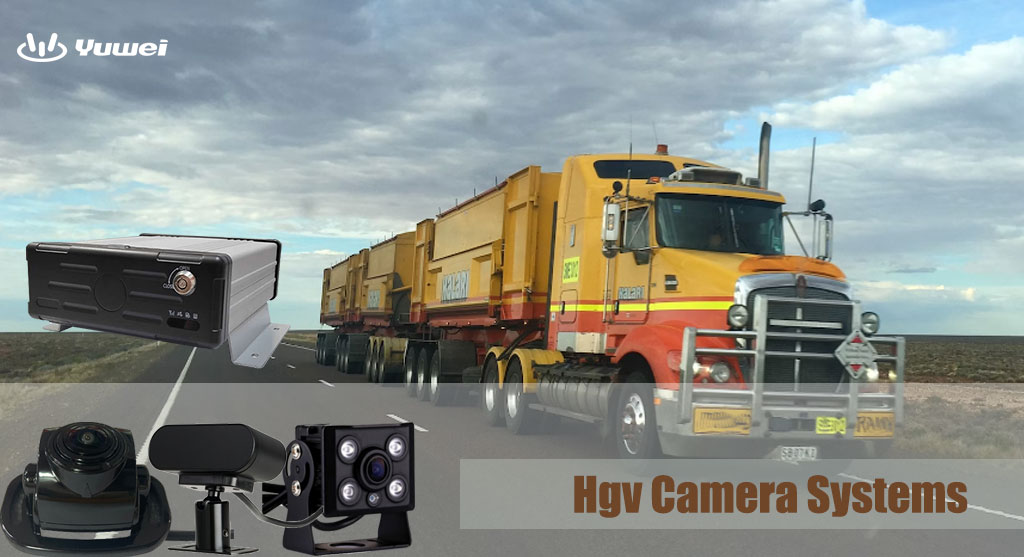
The blind spot of a heavy-duty truck refers to the area where the driver's visibility is obstructed due to the large size of the vehicle, whether stationary or in motion. If there are other vehicles, pedestrians, or obstacles within this blind spot, the driver's limited visibility may prevent them from making correct judgments and decisions, potentially leading to serious accidents. Therefore, eliminating blind spots for heavy-duty trucks is the most effective way to address this issue.
Truck Camera System:
By capturing images through multiple cameras and stitching them into a 360° panoramic image, drivers can actively monitor the surrounding environment on a display screen while operating the vehicle. Ultrasonic radar is used to detect the presence of pedestrians and obstacles in the left, right, and rear blind spots. In the event of danger, the system alerts the driver through sound or visual cues, allowing the driver to passively understand the situation within the blind spot and thereby improve driving safety.
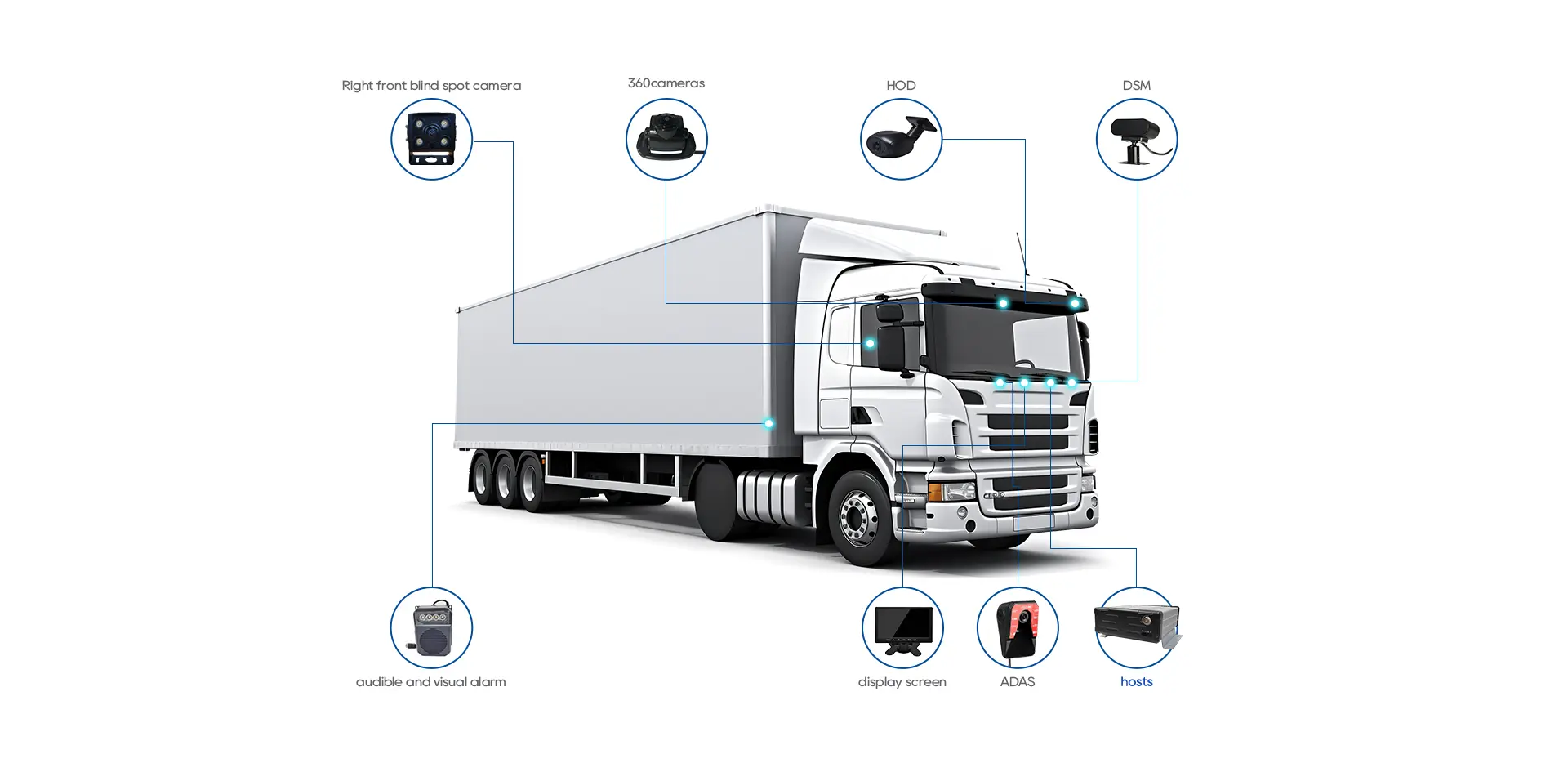
To obtain a panoramic image, front-facing, left-side, right-side, and rear-view cameras are installed based on the size of the heavy-duty vehicle.
Given that dump trucks and construction waste trucks mainly operate on construction sites with complex road conditions and lower speeds, side-mounted ultrasonic radar is primarily used for monitoring and alerting the left and right blind spots. On the other hand, tractor trucks primarily operate on highways at higher speeds, so millimeter-wave radar is mainly used for monitoring and alerting during overtaking and lane changing.
Truck Camera System Components
1. Cameras
High-definition cameras use AHD or LVDS transmission methods. Since LVDS requires strict matching of chips at both ends for image transmission, AHD high-definition transmission mode is generally chosen for blind spot monitoring. Based on the field of view, cameras are categorized as regular or wide-angle.
Regular cameras have a lens angle of less than 90 degrees with a flat lens surface, while wide-angle cameras, also known as panoramic lenses, are essential for meeting the panoramic requirements of heavy-duty trucks.
2. Millimeter-Wave Radar
Millimeter-wave radar is primarily used in vehicles for ACC (adaptive cruise control) and BLS (blind spot monitoring) functions. Its main feature is strong adaptability to natural environments, capable of penetrating heavy fog, haze, and dust, making it widely applicable in vehicles.
3. Ultrasonic Radar
Ultrasonic radar has a wide detection angle but a relatively short detection range, typically covering a 5-meter range. It is mainly used for reverse monitoring and side blind spot monitoring functions in automobiles.
Truck Camera System Functions
Driving Mode
The onboard display screen shows a 360° panoramic image, enabling the driver to inspect the surroundings before driving. When pedestrians or obstacles are detected within 5 meters behind or beside the vehicle, the system issues an audible alert.
Reverse Mode
Controlled by the reverse gear signal, the reverse mode enlarges the combined image from the left, right, and rear cameras to focus on the rear area during the reversing process. Simultaneously, side radar and reverse radar alert the driver to potential hazards.
Turning Mode
When the vehicle turns, such as making a right turn, the system receives the right turn signal from the combination switch and enlarges the display of the right blind spot using the right-side camera to eliminate the inner wheel difference blind spot during heavy-duty truck right turns. Additionally, side radar alerts the driver to potential hazards.
The 360° panoramic image monitoring and radar-assisted alarm for heavy-duty trucks enable drivers to have a comprehensive understanding of the vehicle's surroundings. When a danger is imminent, the alarm signals from millimeter-wave or ultrasonic radar allow the driver to take proactive measures to avoid it, thereby enhancing the safety of heavy-duty truck operations.


















